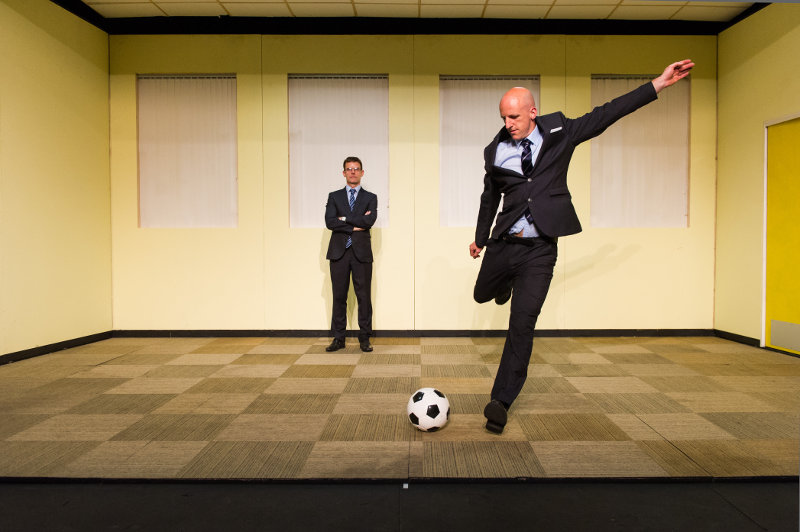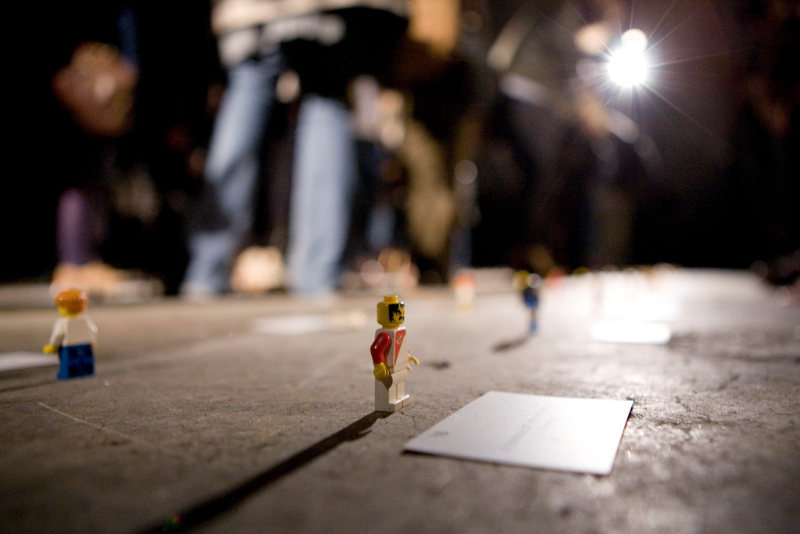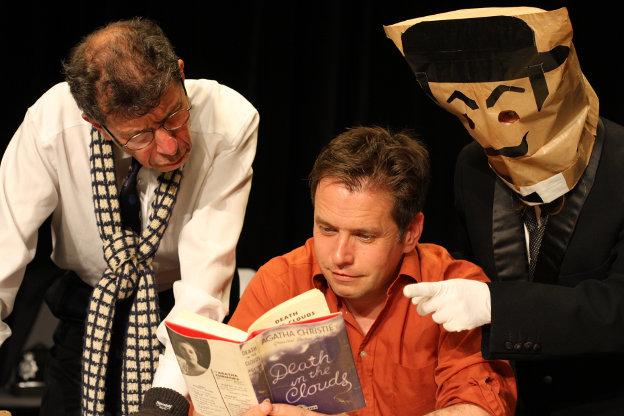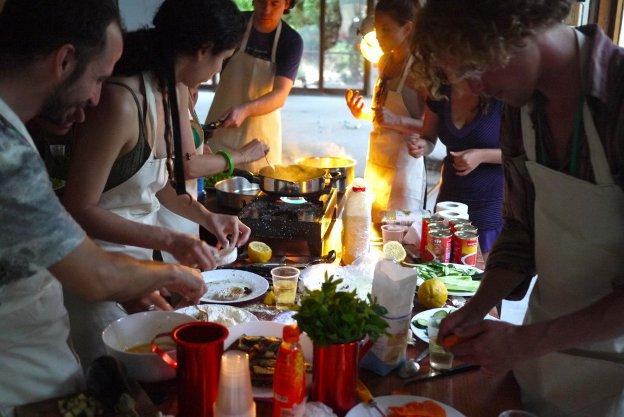The stage is bordered by the three high walls of a grimy, empty office, cut each side with bright yellow doors. As we settle down a tall bald man in a dark grey suit walks in and out, looking like he’s rehearsing for a speech. He yawns, mumbles to himself. A flipchart stands in the centre of the room with a poster saying ‘Celebrating Great Britain Today’. A well-to-do voice from the audience asks when the talk is going to begin; he is the only person to attend. He explains that he is a Pakistani man; his family originates from Britain, but he lives in Pakistan and is now considering moving to the UK. Subverting what we know and assume of a Pakistani man and the usual flow of immigration, the show starts on a knife-edge. Presenting ideas that are funny as well as intelligent and interesting, Ridiculusmus overturn assumptions of race, origin and immigration as they begin a fast-paced, witty and wonderfully performed saga on the formation of Great Britain’s Olympic football team.
The two performers, David Wood and John Haynes, morph and swap characters in the blink of an eye. Suddenly they are a political team that has had the idea that the way to boost Britain’s happiness is to win the Olympic football league. The man in charge of putting the team together has no knowledge or interest in football, and so is now faced with the horrific mission of trying to muster up the same passion for the sport found in a huge mass of the British populace.
Will winning really bring happiness? Who is Britain anyway? An insightful Algerian character is taking his ‘Citizen-shit test’ and reads a Winston Churchill speech from his notebook. He is learning hard to become a British Citizen, but he doesn’t support the English football team.
As the lights fade out and house music is pumped up, David and John’s football moves turn into a dance sequence, graceful and hilarious. This is welcome break in a text heavy show, but Riduculsmus are always playful with their material, constantly throwing out expertly crafted lines. The description of football as ’22 millionaires fucking up the lawn’ is my favorite, and like all good political satire Total Football occupies the space between mockery and honesty.
Masculinity, rage, ignorance, intolerance – a vein of the dangerous racism that dwells in football is present within the text. But is it balanced by passion and a love of the game? As the show itself asks, have we asked any of the countries who have won the Olympic football if it made their country happy? Does it really achieve anything?
In a press conference to discuss the failure of the GB football team the speaker awkwardly reveals his own infertility. He seems to drift off into a desire to express his own feelings, to talk about a current problem in his life, not football. It’s a moment that encapsulates the spirit of the show: Total Football generally says the unsaid. At first it strikes you a little off guard but then the moment settles and is understood to be true.
I am completely disinterested in football as a sport, but was interested in Total Football as the show talks more broadly about Britain, about collective passion and pride in a complex society, about politics, happiness, nationality, ridiculous ideas, pressure and failure. Total Football is a joy to watch, an achievement of magnificent writing, and a true demonstration of Britain today.








